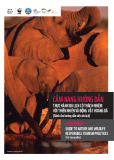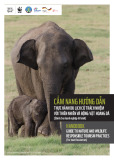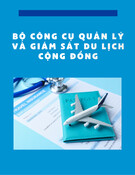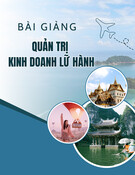
See discussions, stats, and author profiles for this publication at: https://www.researchgate.net/publication/379459181
An Inquiry into the Concept of Tourism Attractiveness
ArticleinTourism leisure and hospitality · March 2024
DOI: 10.59649/2959-5185-2024-1-12-17
CITATION
1
READS
198
1 author:
Aza Yevloyeva
Kokshetau State University
7 PUBLICATIONS9 CITATIONS
SEE PROFILE
All content following this page was uploaded by Aza Yevloyeva on 21 March 2025.
The user has requested enhancement of the downloaded file.

12 Туризм, досуг и гостеприимство № 1(4) 2024
An Inquiry into the Concept of Tourism Attractiveness
IRSTI 71.37. 75 DOI: 10.59649/2959-5185-2024-1-12-17
AN INQUIRY INTO THE CONCEPT OF TOURISM ATTRACTIVENESS
Yevloyeva Aza Sultanovna
An Inquiry into the Concept of Tourism Attractiveness
Abstract. The article delves into the intricate concept of tourist attractiveness, exploring the diverse array of
elements that contribute to the attractiveness of a specific destination, place, or object for travelers. It
comprehensively reviews existing methodologies for identifying and defining the constituent factors that
shape overall tourist appeal, considering both broad perspectives and more nuanced categories such
as destination attractiveness or allure of specific types of tourism. The outcome of this study is a meticulous
examination of the components comprising tourism attractiveness, organized into distinct categories
encompassing nature, culture and heritage, tourism infrastructure, sustainability, digitalization and broader
tourism development, sports and entertainment, as well as hospitality and local communities.
Key words: tourism, tourist attractions, tourism attractiveness, content analysis.
Евлоева Аза Султановна
Туристік тартымдылық тұжырымдамасын зерттеу
Аңдатпа. Мақалада туристік тартымдылық белгілі бір аумақты, орынды, нысанды туристер үшін тартымды
ететін әртүрлі элементтерді қамтитын кешенді тұжырымдамалық аспект ретінде қарастырылады. Жалпы
туристік тартымдылыққа айтарлықтай әсер ететін құрамдас элементтерді анықтауға және анықтауға,
сондай-ақ дестинацияның тартымдылығы немесе туризмнің жекелеген түрінің тартымдылығы сияқты
нақты санаттар тұрғысынан қолданыстағы тәсілдер көрсетілген. Зерттеу нәтижесі табиғат, мәдениет
және мұра, туристік инфрақұрылым, тұрақтылық, цифрландыру және туризмнің жалпы дамуы, спорт
және ойын-сауық, қонақжайлылық және жергілікті қауымдастықтар сияқты санаттарға біріктірілген
туристік тартымдылық элементтерін егжей-тегжейлі көрсету болды.
Түйін сөздер: туризм, туристік аттракциялар, туристік тартымдылық, контент-талдау.
Евлоева Аза Султановна
Исследование концепции туристской привлекательности
Аннотация. В статье рассмотрена туристская привлекательность как комплексный понятийный аспект,
охватывающий различные элементы, делающие определенную территорию, место, объект
привлекательными для посещения туристами. Обозначены существующие подходы к выявлению
и определению составных элементов, существенно влияющих на туристскую привлекательность
в целом, а также с позиции более конкретных категорий, таких как привлекательность дестинации
или привлекательность отдельного вида туризма. Результатом исследования стала детализация
элементов туристской привлекательности, объединенных в такие категории, как природа, культура
и наследие, туристская инфраструктура, устойчивость, цифровизация и общее развитие туризма,
спорт и развлечения, а также гостеприимство и местные сообщества.
Ключевые слова: туризм, туристские аттракции, туристская привлекательность, контент-анализ.
Yevloyeva A.S.а
Sh. Ualikhanov Kokshetau University, Kokshetau, Republic of Kazakhstan
Main provisions. Tourist attractiveness is a
complex concept encompassing various elements
that make a certain territory, place or object at-
tractive for tourists to visit. There are various ap-
proaches to determining the components of tourist
attractiveness, the diversity of which necessitates a
holistic approach on the one hand and taking into ac-
count the specific properties of certain elements that
become central from the point of view of attractive-
ness, on the other.
Introduction. Tourism remains one of the most
dynamic and promising sectors of the global econ-
omy. With the increasing mobility of the population
and the development of vehicles, the tourism indus-

Туризм, демалыс және қонақжайлылық № 1(4) 2024 13
ISSN 2959-5185 (Print)
ISSN 2959-5193 (Online)
Yevloyeva A.S.
try is becoming a key sector for many countries. The
success of the tourism industry depends on many
factors, one of the most important of which is the
tourist attractiveness [1].
Tourist attractiveness includes many facets that
go beyond just the physical or geographical attrac-
tiveness of a tourist destination. These facets are
represented by natural, cultural, historical, ecologi-
cal and infrastructural elements, the complex inter-
action of which forms the attractiveness of the tour-
ist territory [2]. The roots of tourist attraction can
be traced back to the phenomenon of Grand Tours,
when the European nobility went on long trips
across the continent to expand their cultural hori-
zons. It was then that travel became associated with
cultural enrichment and intellectual pursuits. Over
time, the concept has evolved to include elements of
leisure, adventure and relaxation.
The beauty of nature, the cultural significance
of objects, sustainability, accessibility of destina-
tions and infrastructure development are the first to
come to mind when it comes to tourist attractive-
ness. Thus, one of the drivers of tourist attractive-
ness is the richness of the cultural heritage of the
destination, which may include ancient monuments,
museums and cultural traditions, all of which, in
turn, acts as a magnet for tourists who want to im-
merse themselves in the history and culture of the
destination. Breathtaking landscapes, a variety of
ecosystems, and nature features are also important
components of the attractiveness of a tourist destina-
tion. Elements of nature are always one of the basic
categories when choosing a destination for tourists.
However, the world’s existing resources, whether
cultural or natural, must undergo a certain transfor-
mation in order to become a tourist resource. Of-
ten, this transition is possible only if a competent
tourist infrastructure is created, which ensures the
availability of resources, which means that to some
extent their attractiveness. Economic growth, the
processes of globalization and digitalization also
leave their mark on the tourist attractiveness – the
development of the tourism business leads to the di-
versification of the tourist product, making it more
diverse and personalized, the processes of globaliza-
tion and digitalization provide huge opportunities to
find new ways to promote products and entire desti-
nations. Of course, those products and destinations
that take full advantage of digitalization are becom-
ing more competitive and attractive to tourists [3].
Among the emerging trends in choosing a tour-
ist product or destination and determining the most
attractive offer, one can also highlight the greening
of thinking and consumption. The modern tourist is
characterized by extensive knowledge in the field
of conscious consumption and increasingly chooses
green products based on respect for resources, and
most importantly, for host communities. Summariz-
ing the above, tourists prefer products created taking
into account the principles of sustainability.
Attempts to reveal the picture of tourism attrac-
tiveness make it obvious that the concept is dynamic
and it is influenced by many factors. From historical
heritage to natural wonders, from cultural wealth to
technological innovation, the background and con-
text of tourism attractiveness provide a holistic un-
derstanding of what makes a destination attractive.
The purpose of this article is to comprehen-
sively study and analyze the multifaceted concept of
tourist attractiveness and the variety of elements that
make up it. To fulfill this purpose, the article solves
the following tasks:
– examine and identify the various dimensions
or facets that contribute to the overall attractiveness
in sense of tourism;
– propose a conceptual model of tourist attrac-
tiveness, taking into account the latest trends in the
field of tourism.
Methods and organization of the research.
The article provides a content analysis of existing
approaches to determining the elements that form
the tourist attraction. The studied elements were
grouped into seven main categories that affect tour-
ist attractiveness. The variety of approaches and
general understanding of tourist attractiveness, as
well as the specificity of some studies, has reduced
the possible combinations of elements. Neverthe-
less, the resulting picture of tourist attractiveness
suggests the need for a holistic approach to this
phenomenon, as well as a possible universal for-
mula for the necessary elements of tourist attrac-
tiveness.
Literature review. In order to understand the
concept of tourist attraction and identify its key ele-
ments, it is necessary to start with basic concepts
such as attraction itself. Simply put, this is what at-
tracts tourists in one way or another. An attraction
can be either an object or a place, or an event, in a
word, something that will make the trip interesting
and memorable. The literature identifies various ap-
proaches to the classification of tourist attractions,
which usually include:
Natural objects: landscapes, water bodies, flora
and fauna, mountains, beaches, picturesque lakes,
climate and weather.
Cultural objects: historical monuments, mu-
seums, temples, castles, various objects of cultural
heritage, both tangible and intangible.

14 Туризм, досуг и гостеприимство № 1(4) 2024
An Inquiry into the Concept of Tourism Attractiveness
Urban planning: urban architecture, famous
streets, embankments, bridges.
Entertainment: parks, attractions, theaters, con-
cert programs.
Events: holidays, festivals, sports competitions,
matches, promotions and more.
Gastronomic attractions: restaurants, food
tracks, national cuisines, wineries, cheese factories
and more.
Industrial facilities: factories, large industrial
enterprises, spaceports.
Socio-economic component: local community,
economic development.
The most complete is the basic functional clas-
sification of tourist attractions proposed by Kušen
(Table 1).
Table 1 – Basic functional classification of tourism at-
tractions [4]
Basic functional classification of tourism attractions
1 Geological features
2 Climate
3 Water
4 Flora
5 Fauna
6 Protected natural heritage
7 Protected cultural heritage
8 The culture of life and work
9 Famous persons and historical events
10 Special events/happenings
11 Cultural and religious institutions
12 Natural spas/sanitariums
13 Sport and recreation facilities
14 Tourism paths, trails and roads
15 Attractions for attractions
16 Tourism para-attractions
It is important that the attractions are well orga-
nized, safe and interesting for visitors. They contrib-
ute to the development of tourism and create positive
impressions among tourists. Attractions are the ba-
sic tourist resources that form the tourist attraction.
Nevertheless, attractiveness in tourism is a complex
and complex phenomenon, influenced by various
factors, depending on what is decisive in delineating
the boundaries of attractiveness. Thus, many scien-
tific papers on attractiveness in tourism are based on
the concept of attractiveness of a tourist destination.
A tourist destination is a complex of tourist attrac-
tions that are in a certain connection and interaction.
The most common definition of a destination is as a
territory that attracts tourists and is essentially the
purpose of a trip. A destination may have both ad-
ministrative and geographical boundaries, may oc-
cupy hundreds of thousands of square kilometers,
or be limited to the territory of one theme park of
twenty hectares. It all depends on the features that
become points of attraction for tourists.
Among the works considering the attractive-
ness of a tourist destination, there are many that
narrow down to the attractiveness of certain types
of tourism or a tourist product. Thus, the tourist
attractiveness of cities or the process of urbaniza-
tion itself, natural tourism [5], cultural product,
heritage and many others have been studied. In
many of these works, attempts are made to iden-
tify categories, factors or elements that form tour-
ist attractiveness, which is most interesting in the
context of this study. For example, Bridaa (2012)
divides all the variety of factors affecting urban
tourist attractiveness into three key components:
primary, secondary and additional. The main ele-
ments are cultural facilities (for example, museums
and art galleries), entertainment and sports facili-
ties, as well as physical and socio-economic char-
acteristics, which represent the main purpose of
tourists visiting the city. Secondary elements (i.e.
accommodation and shopping) and additional el-
ements (i.e. transport and tourist information) are
also very important for the success of urban tour-
ism, although they are not the main attractions for
visitors. “Additional elements” also include park-
ing spaces, information desks, travel guides and
signs. In general, the city is no longer considered
as a production unit, but as a place of consumption.
Thus, residents and tourists are seen as a new eco-
nomic resource capable of increasing local income
and producing social benefits such as cultural and
educational services for the local community [6].
Considering the attractiveness of national parks
and, accordingly, an ecological tourism product,
Castro associates it with the reputation of the park,
the sights of the region and the population density.
They identified the internal and external attributes
of the park, including the age of the park, the variety
of activities, opportunities for recreational activities,
the number of services provided, such as transport,
food, souvenirs, the number of tourist attractions,
the number of accommodation and catering facili-
ties, distance from the main settlements [7].

Туризм, демалыс және қонақжайлылық № 1(4) 2024 15
ISSN 2959-5185 (Print)
ISSN 2959-5193 (Online)
Yevloyeva A.S.
Also, the concept of tourist attraction is associ-
ated with the perception of tourists, there are a num-
ber of works devoted to the attractiveness index,
where, along with basic categories such as territory
and environment, infrastructure, historical and natu-
ral attractions, the economic profile of the tourist
and the characteristics of tourist demand are laid
down [8, 9, 10, 11].
Thus, tourist attraction is a broad and complex
phenomenon that can include various elements de-
pending on what is central: a specific type of tour-
ism, a tourist product or a destination.
Results and discussion of the research. How
broad can the concept of tourist attractiveness be
and whether there are those elements that are essen-
tial and basic. After reviewing a number of sources
devoted to the topic of tourist attractiveness, we
came to the following main aspects of tourist attrac-
tiveness – the most important factor shaping the suc-
cess of global tourist destinations. The results of the
analysis are presented in the comprehensive scheme
shown in Figure 1, which includes all the variety of
elements that contribute to the attractiveness of tour-
ist sites.
1. Nature. Natural aesthetics is inherent in one
of the fundamental tourist factors – nature. Breath-
taking landscapes, diverse wildlife and climate act
as a magnetic force for travelers with a variety of
goals.
2. Culture and heritage. The real soul and life in
any tourist product are exalted by cultural objects.
Historical monuments, museums and architectural
wonders tell about the past, enriching the impres-
sions of visitors. The fusion of tradition and moder-
Figure 1 – Tourism attractiveness constituents [Compiled by author]
nity creates a tapestry of authenticity, inviting tour-
ists to immerse themselves in local narratives.
3. Tourist infrastructure. The basis of tourist
attractiveness is deservedly a solid infrastructure.
Well-established transport networks, modern ac-
commodation facilities and efficient services form
the basis on which unforgettable travel experiences
are built.
4. Stability. The impact of tourism is twofold
and the modern industry is trying to find a balance


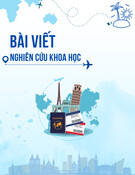
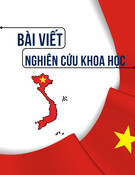

![Ngân hàng câu hỏi trắc nghiệm Tổng quan du lịch [chuẩn nhất]](https://cdn.tailieu.vn/images/document/thumbnail/2025/20251007/kimphuong1001/135x160/32091759830428.jpg)


